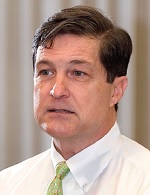If you were to ask passers-by on the street what the Fed does, the answer would probably be "set interest rates." Some might also note that the Fed's regional Reserve Banks supervise many financial institutions. I would wager, however, that few are aware that Reserve Banks are also active in the community development world. It's a role that we've formally had for 35 years now and one that I believe is likely to benefit in coming years from findings of economic research.
The role of community development grew out of our responsibility to implement the Community Reinvestment Act (CRA), which Congress passed in 1977 to end the practice of "redlining." The Fed and other supervisory agencies were directed to examine how well banks met the credit needs of low- and moderate-income neighborhoods in their markets and to take that into consideration when reviewing applications for mergers, acquisitions, or new branches. Not long afterward, in 1981, the Fed's Board of Governors directed the Reserve Banks to set up an office to assist citizens and community groups who wanted to protest a bank's application.
As community groups became more familiar with the protest process, they needed less of that type of assistance. At the same time, banks and community groups were increasingly seeking each other out: Banks were looking for opportunities to invest in the development of disadvantaged communities, and community groups were looking for sources of investment. So the community affairs role shifted toward facilitating that process of relationship building.
Legitimate questions can be raised about the CRA as a matter of public policy. For example, it's not obvious that the banking industry was forgoing many truly profitable loans in low- and moderate-income neighborhoods. And it may be that many of the bank investment activities that are seemingly attributable to the CRA are occurring simply because they are profitable and would have occurred even without it. In any case, one can discern in the law an implicit congressional mandate for the Fed to contribute to the effectiveness of what might be called the community development industry — the organizations and activities aimed at improving the well-being of residents of distressed communities.
How can the Fed best contribute to the effectiveness of these efforts? What sources of comparative advantage might a central bank draw on to assist the community development world? One relevant attribute is our position as a nonpartisan entity, with no vested interest in one approach or another. This allows a central bank to act as a trusted source of objective information.
More broadly, because the primary responsibility of a central bank is monetary policy, rigorous state-of-the-art economic research has to be a core competency. I believe that the insights derived from economic research can provide a valuable complement to the work of community development practitioners.
A substantial body of research since the 1950s has focused on the determinants of the long-term growth in economic standards of living. Many of the lessons learned apply both at large scales — think countries — and at relatively small scales — think cities or even neighborhoods. In particular, much of this research now points to a critical role for human capital: A society's long-term economic growth depends both on people having the skills to develop new technologies and on workers learning new skills to work with those technologies. At the community level, too, the acquisition of skills by workers (perhaps combined with the migration of skilled workers into the area) is essential to economic development.
This is an area of particular interest to the Richmond Fed. In recent years, our researchers have been reviewing what economic research has to say about human capital acquisition and how that research applies to workforce development initiatives. Our Research and Community Development departments have also collaborated on focus groups with teachers and workforce development practitioners throughout our district to give us the perspective of the people who are actually on the ground.
One lesson for those interested in the well-being of residents of low- and moderate-income neighborhoods is that long-run improvement might remain difficult without finding ways of improving the residents' job-related skills. I don't mean to suggest that education is a cure-all; to be sure, the residents of lower-income communities face myriad barriers to opportunity. And there can be little doubt that the structure and quality of local institutions are a crucial factor in community development, consistent with research indicating that institutional quality is a potent factor explaining growth differences at the national level as well. Well-grounded research findings are key to identifying the most constructive way forward.




